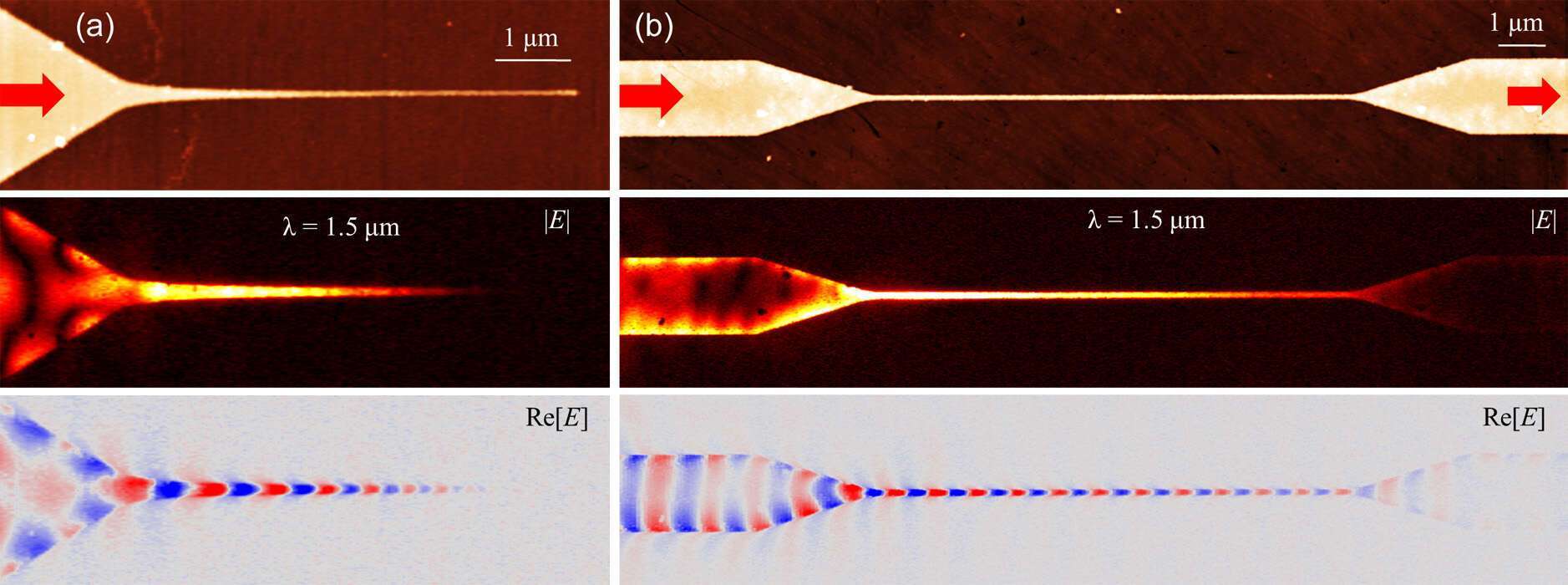
Adiabatic Nanofocusing of Short-Range SPPs
We report on adiabatic nanofocusing of short-range surface plasmon polaritons (SPPs), launched on 35-nm-thick gold stripe on fused silica substrate. The investigation is conducted experimentally with amplitude- and phase-resolved near-field mapping at telecommunication wavelengths (around 1500 nm) and supported by numerical simulations. The first structure with a taper, designed to have a constant adiabatic parameter, shows the increase of effective mode index and corresponding slowing down the light, when short-range SPPs are focused from 2.5-micron-width stripe to 30-nm-width stripe [Fig. 1(a)]. However, such nanofocusing does not result in monotonic increase of electric field, since the increase due to concentration is compensated by the propagation losses for narrow stripes. In order to achieve the maximum field enhancement and correspondingly maximum efficiency of nanofocusing, another taper was designed through numerical optimization. The nanofocusing into and guiding through waveguides as small as 30 nm in width is demonstrated experimentally [Fig. 1(b)]. The waveguide properties, such as effective mode index and propagation length, as well as the efficiency of optimized taper are measured experimentally and compared with numerical simulations. The nanofocusing of SPPs beyond the diffraction limit of light allows concentration and manipulation of light energy or signals on nanoscale size, which is especially attractive for sensors, lab-on-a-chip and active telecommunication components.

Figure 1. Pseudocolor s-SNOM images, representing topography, amplitude and real part of measured near-field data for nanofocusing of short-range SPP with (a) taper of constant adiabatic parameter and (b) numerically optimized taper.
[1] D. K. Gramotnev and S. I. Bozhevolnyi, Nanofocusing of electromagnetic radiation, Nature Photonics, 2014, vol.8, No.1, pp.13-22.
zenin@iti.sdu.dk
Powered by Eventact EMS